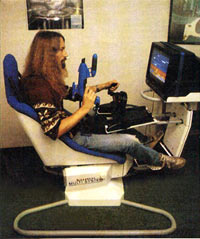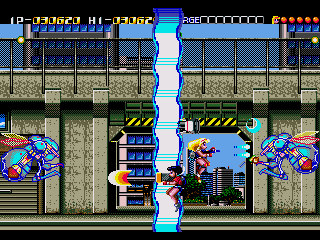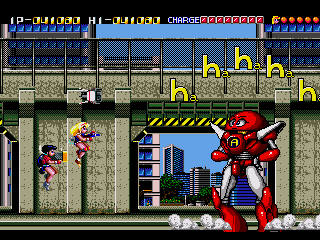Looney Tunes Collector: Alert!
Platform: Gameboy Color
Release: 2000
Developer: Infogrames Lyon
Publisher: Infogrames
Designer: Vanna Ty
Animator: Lionel Frappé
Graphics: Josiane Girard
Programmers: Séphane Abrassart, Laurent Krzywanski, Alexander Bacquart, Sébastien Charvet, Florent Curé
Composer: Alberto José González
In June 2000 the handheld game market was still clearly dominated by only one player: Nintendo. The Gameboy Color had brought new life to the aging Gameboy handheld market and the true successor, the GBA was still a year away from North American shelves, with competitors like the Neo Geo Pocket and cellphones making little to no impression.
With hardware limitations in the age of 3D graphics on consoles making development of new ideas harder and harder on the handheld, a slew of clones of successful games were hitting the market, and nothing was more successful than the all-powerful Pokemon franchise. Looney Tunes Collector: Alert! (aka Looney Tunes Collector: Martian Quest in Japan, Attacke von Mars in Germany, Gevaar van Mars in Holland and Martian Alert elsewhere in Europe) was originally perceived to be just another Pokemon retread with a famous license thrown on top, and if you heard the pitch, that's what you'd think.
The plot revolves around Bugs Bunny, once again taking a wrong turn at Cocomo and overhearing Marvin the Martian's plan for destroying the earth. Naturally you have to stop him by collecting the pieces to his teleportation device and to do so must "collect" various Looney Tunes characters. Said characters can then be traded with friends using the link cable.
Sounds pretty much like Pokemon right? Thankfully nothing could be further from the truth.

The game owes more to The Lost Vikings than to Nintendo's Gotta-Catch-Em-All addiction machine. The main game is played from a forced perspective angle (think overland map in Zelda), with a variety of jump and run elements as well as some combat (Alladin on Genesis is a good parallel for the feel, only with screen depth). As you progress several obstacles (Martian creatures, hunters, etc.) will block your path, as well as the afore mentioned Looney Tunes. As you defeat them or perform tasks for them, they will join your quest and by switching between characters new abilities are unlocked. Speedy Gonzalez can run really fast and enter small mouse holes, Tweety can fly over long gaps, Daffy can swim, etc.) This combination of elements gives the game a strong puzzle element and feels very Metroidvania-ish. The fun little dialogue sequences (that aren't brilliant but do let you harken back to classic toons) and the spot on graphics that are surprisingly well realized and animated, especially given the system limitations, make Looney Tunes Collector a brilliant and fun game.

 The next year a sequel came out (further deepening the Pokemon-a-like image) called Looney Tunes Collector: Marvin Strikes Back! (Martian Revenge! in Europe). The same game engine is employed here and characters could be transferred between the two games, but this time you take on the role of Marvin the Martian. The plot is a fun twist (Marvin is ticked off at being defeated and decides to take it out on Daffy who has gone on TV to claim credit for Bugs' deeds in the first game). While adding nothing truly new, it was more of a great game that should also be enjoyed.
The next year a sequel came out (further deepening the Pokemon-a-like image) called Looney Tunes Collector: Marvin Strikes Back! (Martian Revenge! in Europe). The same game engine is employed here and characters could be transferred between the two games, but this time you take on the role of Marvin the Martian. The plot is a fun twist (Marvin is ticked off at being defeated and decides to take it out on Daffy who has gone on TV to claim credit for Bugs' deeds in the first game). While adding nothing truly new, it was more of a great game that should also be enjoyed.















_box.jpg)











_-!-000.jpg)












